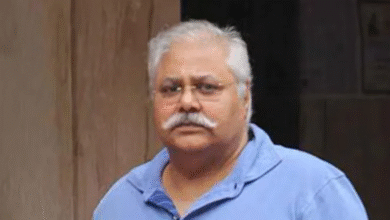India rises as the world’s next MedTech manufacturing powerhouse
Set to reshape the global healthcare landscape; with a unique combination of scale, cost-efficiency, talent, and innovation, the country is on track to become a dominant force in the medical technology space — bringing life-saving healthcare solutions to millions while powering economic and technological growth.

India is swiftly emerging as a central force in the global medical technology (MedTech) manufacturing sector, aiming to become a key hub for innovation and large-scale production. As the international community looks for more diversified and resilient healthcare supply chains, India’s rapidly advancing MedTech industry is becoming increasingly attractive.
The Indian MedTech market size, valued at US$12 billion in 2023-24, is projected to reach US$50 billion by 2030. The global market share of the medical device industry in India is expected to grow from the current 1.65% to 10%-12% within 25 years.
This growth comes at a vital time. The COVID-19 pandemic exposed critical gaps in global healthcare systems and intensified the demand for dependable, affordable, and technologically advanced medical equipment. With its robust manufacturing capabilities, sound policy framework, and vast talent pool, India is well-equipped to address this global need.
The country’s MedTech sector has made tremendous progress in recent years. India now ranks among the top 20 medical device markets globally and is home to over 750 manufacturers. These companies produce a range of devices, including diagnostic kits, surgical instruments, imaging machines, and sophisticated implants that serve both domestic and international needs.
India’s success in pharmaceuticals and biotechnology has laid a strong foundation for its MedTech expansion. Major cities such as Bengaluru, Hyderabad, Pune, and Ahmedabad have developed into specialized hubs for medical device manufacturing. These cities house cutting-edge production facilities and research centers that comply with global standards.
The nation’s cost competitiveness, a large skilled labor force, and an expanding domestic healthcare market continue to attract global investors and medical device companies. With the global focus on accessible healthcare, India’s ability to deliver quality at scale has made it a vital player in worldwide supply chains.
Government initiatives have been central to fueling this growth. The Production Linked Incentive (PLI) Scheme for medical devices, for example, has encouraged domestic manufacturing while drawing foreign investment. Medical Device Parks in several states have created integrated environments with shared infrastructure and logistical advantages.
The National Medical Devices Policy 2023 is another major step. It seeks to drive innovation, simplify regulations, and strengthen infrastructure, while promoting research, skill development, and exports. Together with flagship schemes such as Make in India, Startup India, and Digital India, this policy provides a comprehensive platform for long-term MedTech sector growth.
Regulatory simplification and increased public health expenditure have also played an important role in nurturing the industry. These policy measures ensure that companies can focus on scaling production while maintaining safety and compliance with international norms.
India’s exports of medical devices have seen significant growth, with products now reaching over 150 countries, including high-standard markets like the United States and the European Union. Items such as surgical tools, diagnostic devices, and health monitoring equipment are in high demand across the globe.
The pandemic provided a key moment for Indian manufacturers to demonstrate their capabilities. They were able to rapidly scale production of critical equipment like ventilators and personal protective gear, winning the trust of international buyers and proving India’s manufacturing resilience.
Multinational corporations are now deepening their presence in India. Many have either expanded local operations or formed partnerships with Indian firms to benefit from India’s manufacturing expertise, cost advantages, and regulatory environment.
India’s MedTech expansion isn’t limited to mass production; it is equally focused on innovation and R&D. Indian companies and startups are developing advanced medical technologies tailored for both emerging and developed healthcare systems.
This innovation includes AI-powered diagnostic devices, portable monitoring tools, and affordable solutions for rural healthcare challenges. Collaborative projects with international institutions and the rise of MedTech incubators are fostering new breakthroughs.
Academic institutions like the IITs, NITs, and medical research centers are increasingly collaborating with the private sector to drive innovation. At the same time, India’s expertise in IT and software enhances the development of smart devices, digital health platforms, and remote healthcare solutions.
A major advantage for India is its abundant pool of skilled human resources. With over 1.5 million engineering graduates each year and a large number of medical professionals, the country is well-positioned to support the sector’s workforce needs.
Government and private efforts have also prioritized training programs focused on manufacturing, regulatory compliance, and quality control for medical devices. These programs ensure that Indian products meet international quality benchmarks and support export growth.
The growing interest of young entrepreneurs and startups is another promising sign. With increasing venture capital interest and support from government schemes, India’s MedTech sector is attracting a wave of new ideas and disruptive technologies.
India’s reputation as the “pharmacy of the world” enhances its position in the MedTech domain. Its established track record as a reliable and cost-effective healthcare partner boosts trust among international stakeholders.
Indian-made devices are known for being durable, affordable, and adaptable, particularly beneficial for developing countries that need practical healthcare solutions. This advantage further expands India’s export potential and strengthens its global presence.
The country’s strategic geographic location also helps streamline international trade. Proximity to key markets in Asia, Africa, and the Middle East makes India a preferred logistics hub for global healthcare companies.
Looking ahead, the future of India’s MedTech sector appears bright. Ongoing policy reforms, the expansion of medical device parks, and rising R&D investments all point toward sustained growth and global leadership.
As global health challenges evolve, India’s ability to provide scalable, affordable, and innovative medical solutions will be indispensable. Its focus on self-reliance, encapsulated in the Atmanirbhar Bharat initiative, supports this ambition by promoting local production and reducing dependence on imports.
Ultimately, India’s MedTech manufacturing boom is set to reshape the global healthcare landscape. With a unique combination of scale, cost-efficiency, talent, and innovation, the country is on track to become a dominant force in the medical technology space—bringing life-saving healthcare solutions to millions while powering economic and technological growth.















